Lyophilized
Short-Term Storage
- Room Temperature
- Shelf Life: 30 – 60 days
Conditions: Store lyophilized peptides in a cool, dark, and dry place at room temperature. While stable in this form, room temperature storage should be limited to a few weeks to prevent loss of potency.

Lyophilized
Long-Term Storage
- Refrigerator
- Shelf Life: 1-2 years
Conditions: For long-term storage, refrigerate at 4°C (39°F). This temperature range helps preserve freeze-dried peptides, extending stability up to two years.

Lyophilized
Extended Storage
- Freezer
- Shelf Life: 2-3 years
Conditions: For maximum preservation, freeze at -20°C (-4°F). This setting slows down degradation processes, keeping peptides stable for 2-3 years. To prevent degradation, aliquot peptides into single-use portions to avoid freeze-thaw cycles.

Reconstituted Peptides
Storage in Refrigerator
- Mixed with Bacteriostatic Water
- Shelf Life: 2-4 weeks
Conditions: Store at 2-8°C (36-46°F) in a refrigerator. This temperature helps preserve the solution, slowing bacterial growth and peptide degradation. Avoid freeze-thaw cycles by preparing single-use aliquots.

Additional Storage Tips for Peptide Integrity
1. Limit Freeze-Thaw Cycles
Peptides are sensitive to temperature changes. Divide peptides into small, single-use aliquots upon initial storage to prevent degradation over time.
2. Protect from Light and Air
Light and air exposure can cause oxidation, especially for peptides with amino acids like cysteine, methionine, and tryptophan. Use opaque, airtight containers to protect peptides from environmental factors.
3. Allow Gradual Temperature Adjustment
Before opening a peptide container taken from the freezer, let it reach room temperature to prevent condensation. This step reduces moisture exposure, which can compromise stability.
4. Use Appropriate Containers
For storage, select chemically resistant containers such as high-quality glass or polypropylene to minimize contamination and reactions with peptide compounds.
Ensuring Optimal Peptide Storage
- Room Temperature: Suitable for short-term storage of lyophilized peptides (30 – 60 days).
- Refrigeration (4°C / 39°F): Ideal for long-term storage of lyophilized peptides (1-2 years).
- Freezing (-20°C / -4°F): Best for extended storage of lyophilized peptides (2-3 years)
- Refrigeration for Reconstituted Peptides (2-8°C / 36-46°F): Preserves reconstituted peptides with bacteriostatic water for up to 2-4 weeks.
Following these best practices will help maintain the stability and quality of your peptides, ensuring they remain viable for accurate, reliable research over time.
Peptide Storage FAQ: Preserving Stability and Quality
- Short-Term (Room Temperature): Store in a cool, dark, and dry place at room temperature for 30-60 days. Avoid exposure to heat or humidity.
- Long-Term (Refrigerator): For extended stability, refrigerate at 4°C (39°F). This keeps peptides stable for 1-2 years.
- Extended Storage (Freezer): Freeze at -20°C (-4°F) for maximum preservation of 2-3 years. Freezing slows degradation; avoid repeated freeze-thaw cycles by aliquoting into single-use portions.
Reconstituted peptides (mixed with bacteriostatic water) are more prone to degradation. For optimal preservation:
- Refrigeration (2-8°C / 36-46°F): Store in a refrigerator to maintain stability for 2-4 weeks. Always avoid freeze-thaw cycles by preparing single-use aliquots.
Freeze-thaw cycles can lead to peptide degradation, reducing stability and effectiveness. To prevent this, divide peptides into small, single-use aliquots before freezing to avoid repeated thawing.
Yes, but only for short-term storage (30-60 days) if peptides are in lyophilized form. Room temperature storage may lead to faster degradation, so it’s best to store peptides in the refrigerator or freezer for a longer shelf life.
Exposure to light and air can cause oxidation, which may damage certain amino acids like cysteine, methionine, and tryptophan. To protect peptides, use opaque, airtight containers that limit exposure to environmental factors.
Allow the container to reach room temperature before opening. This prevents condensation, which can introduce moisture and compromise peptide stability. A gradual temperature adjustment is ideal for maintaining quality.
Use containers made of chemically resistant materials like high-quality glass or polypropylene. These materials minimize contamination risks and reduce reactions that could degrade peptide compounds.
Follow these storage guidelines for peptide stability:
- Room Temperature: Suitable for short-term storage of lyophilized peptides (30-60 days).
- Refrigeration (4°C / 39°F): Ideal for long-term storage of lyophilized peptides (1-2 years).
- Freezing (-20°C / -4°F): Best for extended storage of lyophilized peptides (2-3 years).
- Refrigeration for Reconstituted Peptides (2-8°C / 36-46°F): Maintains reconstituted peptides with bacteriostatic water for 2-4 weeks.
Generally, yes, but certain peptides may have specific requirements depending on their chemical composition. Always refer to the supplier’s recommendations for any unique storage conditions.
Discoloration or changes in solution consistency may indicate degradation. Discard the peptide and consult the supplier if you notice any unusual appearance or Odor, as this could impact research results.


